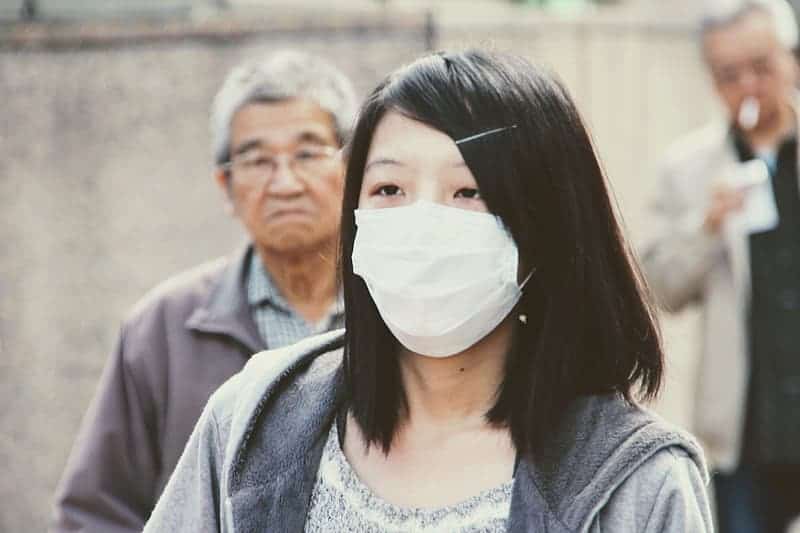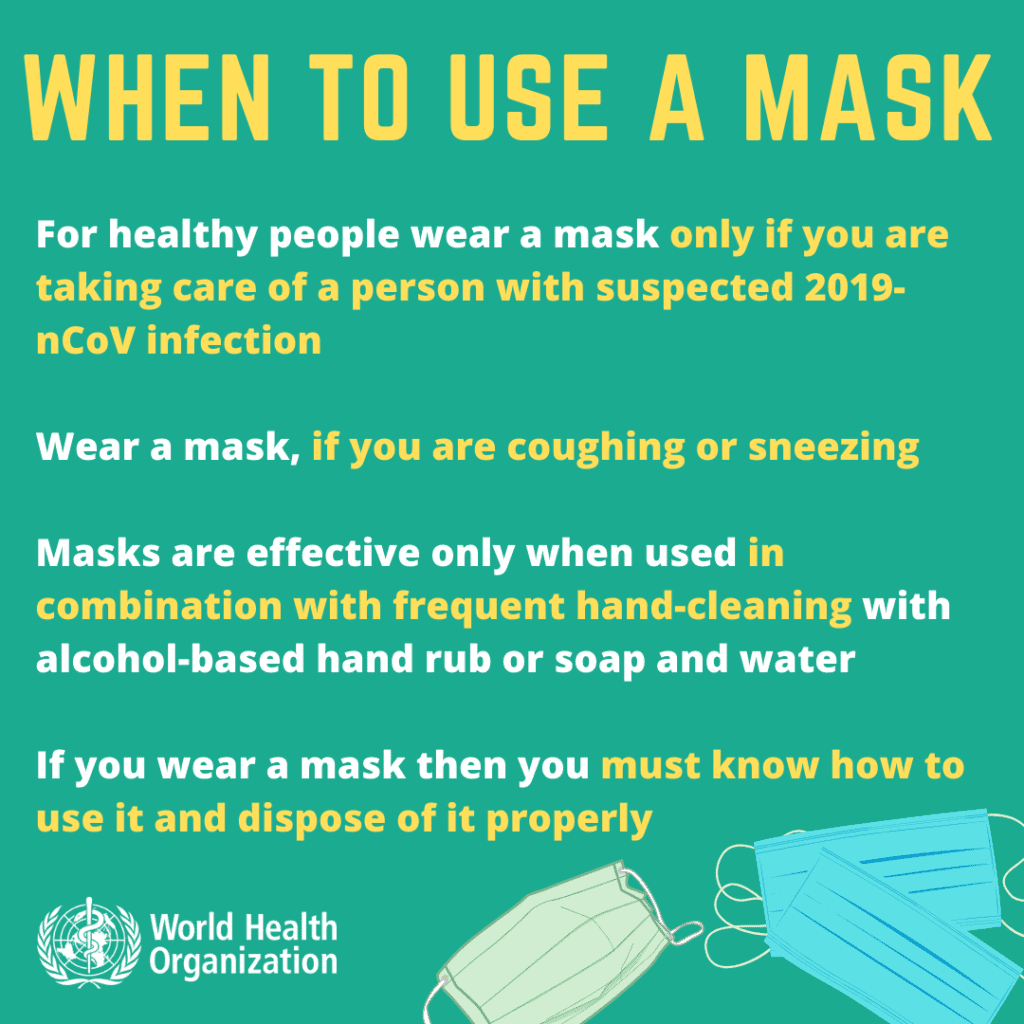If they’re not the right type, properly fitted, and you use them properly, face masks are almost useless. Even in these cases, doctors don’t recommend them unless the outbreak is spreading within the community.

As the COVID-19 outbreak continues to take its toll, more people are turning to surgical (or specialized) masks for protection. China’s normally everflowing industry of face masks is struggling to keep up, as shortages have been reported throughout the country. In Japan, thieves have stolen thousands of face masks, also leading to a shortage, and elsewhere in the world, dentists are worried they might not have sufficient masks in the future.
The world has decided that face masks are good protection. But is that really the case? Not in most cases, say the experts.
“According to the World Health Organization, people should only use a mask if they are sick themselves, or if they are treating a person who is known to be infected, says Inna Ricaro-Lax, a postdoctoral associate in virology and infectious Diseases at the Rockefeller University. “The general public do not need to wear a mask at this point.”
For people living outside of the heavily infected areas (which at this point, means China only), there’s just not much reason to use it.
For the most part, masks make it so that the user doesn’t spread his own pathogens into the environment — not the other way around. The main reason to use a mask is if you are coughing or sneezing, and even then, it’s only effective when used in combination with frequent hand-washing.
Furthermore, fitting a mask is not as easy as it seems. It needs to be the right size, it needs to be fitted properly, and breathing through it over long periods of time is unpleasant and tricky. Disposing of the mask should also be done with care.
These things typically require some training, which health professionals routinely undergo.
The reason why the World Health Organization is steadfast in its advice that people shouldn’t really use face masks is that for the little protection that they offer, these masks could cause shortages in the places where they are needed the most: hospitals.

We’ve already seen that doctors and nurses are extremely vulnerable to outbreaks such as this novel coronavirus, and COVID-19 has infected hundreds if not thousands of health professionals.
“Researchers and medical teams who routinely work with dangerous pathogens use these, but each person needs to be fitted with a specific respirator that fits their face shape and size, and be trained on proper use. Otherwise, breathing through these masks is pretty hard and very uncomfortable. Therefore, respirator masks should not be used by the general public,” adds Inna Ricaro-Lax in an email to ZME Science.
Doctors and nurses treating the sick need the masks the most, and if the outbreak has not yet reached your community, there is little reason to use face masks.
“As the virus is currently not spreading in the community, the CDC does not recommend using masks — and it is better to do it only when CDC or WHO suggest it,” says senior health researcher Sandra López Vergès, a virologist at the Gorgas Memorial Research Institute for Health Studies in Panama. The best prevention, she too says, is washing your hands.
“The best preventive measures for this outbreak, as for any infection is frequent handwashing with water and soap, and not having contact with suspected/confirmed cases,” López Vergès adds.
But what if the outbreak is spreading in your community?
When should you use face masks
Some specialists disagree with WHO recommendations when dealing with the outbreak hotspots.
In an interview with France24, Joseph Kwan, professor at Hong Kong University of Science and Technology says that in crowded areas that have been exposed to the disease, such as Hong Kong, using a mask is crucial to stop the virus from spreading “like wildfire”. According to Kwan, when the disease is spreading the community, not wearing face masks is a “health disaster.”
Of course, if the virus is in the community, the best thing to do is to avoid crowded places and never stay closer than 2 meters (6 feet) from anyone — but of course, that’s rarely possible.
“If the virus is the community, the best is to avoid confined spaces with a high density of people. Surgical masks should be enough to protect from respiratory viruses in general when there is no close contact with cases, but has soon as these masks are humid, they should be changed,” says Inna Ricaro-Lax.
So in the vast majority of cases, masks are not required unless you are sick yourself. It is only when the disease is spreading around you that masks can be really useful. Yet even in these cases, there is some divergence of opinion among specialists.
Which type of mask works best against the coronavirus

Dr. William Schaffner, an infectious-disease specialist at Vanderbilt University in Tennessee, does not agree that surgical masks can have a big impact.
Surgical masks have become relatively common (mostly in some parts of Asia), but again — they are best used when infected people don’t want to pass their pathogens to others.
Surgical masks are designed to keep the pathogens inside the surgeon’s mouth and nose outside of the patient, Schaffner told LiveScience. Their impact on an active outbreak is modest at best, especially as without training, most people might not know how to use them properly.
Inna Ricaro-Lax, on the other hand, believes that surgical masks can still be of some use.
“A regular medical mask should suffice, as long as it’s used properly alongside with frequent hand washing and appropriate disposal. Generally speaking, respirator masks are more efficient, but they should not be widely used,” she said.
Experts do agree that respirator masks are more efficient than surgical masks. But they are also less available, and should not be used without a strong reason to do so. The N95 respirator is the most common such mask.
“N95 masks should be used only when necessary after analyzing risk assessment and health care personnel or family having close contact with the patient should be the priority to use them,” says Sandra López Vergès, Ph.D.
So to sum it up, your best bet is washing your hands. Surgical masks might help a bit, but not that much. Respirator masks can be much more effective, but they should only be used when the virus is actively spreading in your area.
How to put on a face mask
If you do decide to use a face mask, you should be sure to use it properly.
The WHO website has an excellent guide on how to put on (and take off) a face mask. You should be sure to clean your hands, either with soap and water or alcohol-based hand rub. If possible, avoid touching the mask itself.
The mouth and nose should be closely covered by the mask. There should be no gaps between the face and the mask. This will make it slightly uncomfortable.
As soon as the mask becomes damp, it should be discarded. Single-use masks should never be reused.
Masks should only be discarded in a closed bin — not in an open one. Be careful not to touch the front of the mask, or if you do, clean your hands thoroughly.


